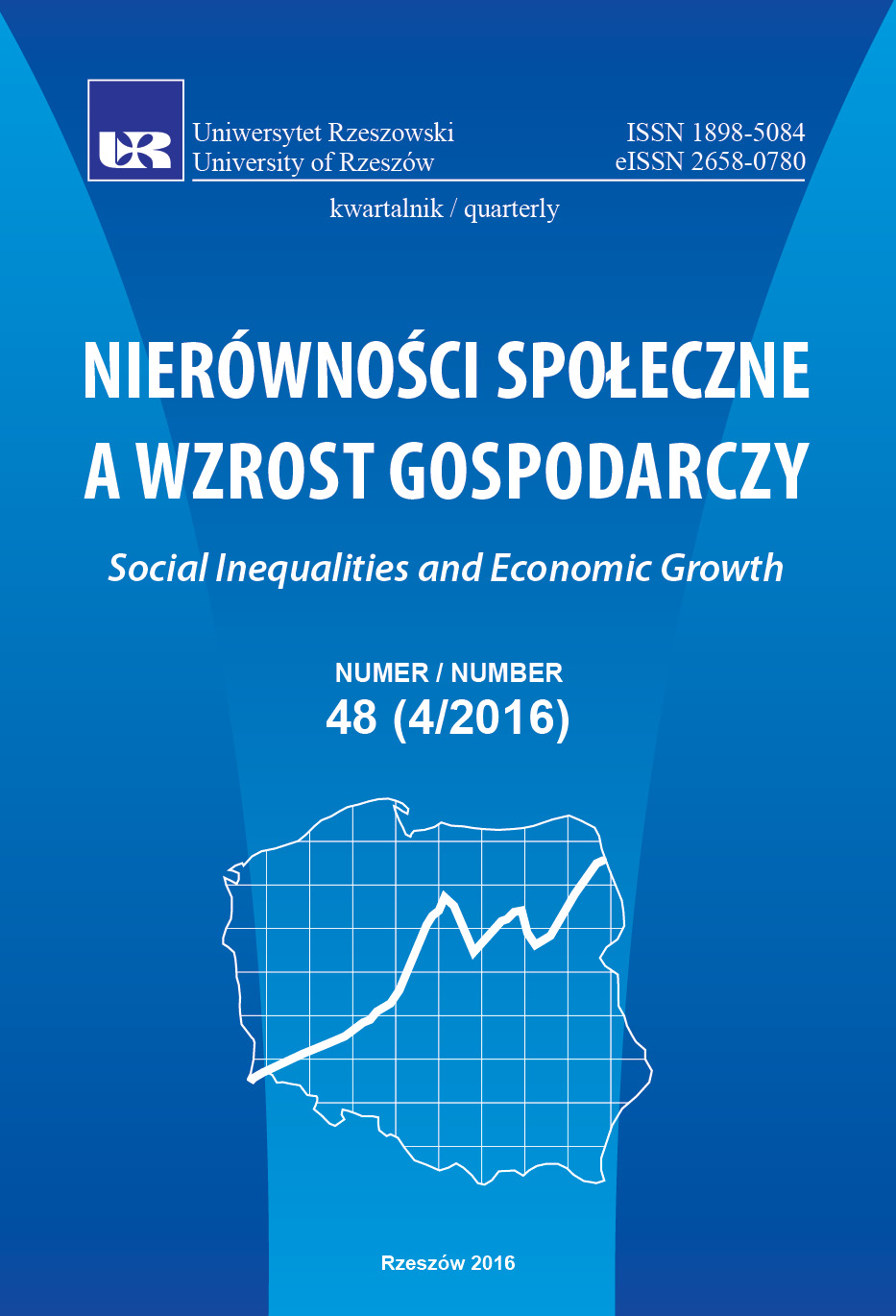Zróżnicowanie w dostępie do onkologicznych usług zdrowotnych w województwach Polski
DOI:
https://doi.org/10.15584/nsawg.2016.4.17Słowa kluczowe:
onkologiczna opieka zdrowotna, nierówności w dostępie, radioterapiaAbstrakt
Nowotwory złośliwe to druga w kolejności przyczyna śmiertelności na świecie. Liczba zachorowań na raka w ostatniej dekadzie wzrosła. W Polsce występują trudności w dostępie do lecznictwa onkologicznego. Pierwszą trudnością jest zbyt długi czas oczekiwania na wizytę u specjalisty. Kolejna to nieskuteczna diagnostyka, która powoduje, że nowotwór jest wykrywany w zaawansowanym stadium. Pochodną tych problemów jest rozmieszczenie ośrodków onkologicznych, przede wszystkim w dużych miastach, co powoduje długi czas dojazdu do punktu ambulatoryjnych świadczeń onkologicznych. Następną trudnością w dostępności jest organizacja systemu opieki zdrowotnej oparta na limitowaniu liczby udzielanych świadczeń. Celem opracowania jest wskazanie nierówności w dostępie do usług onkologicznych (w tym radioterapii) w województwach z wykorzystaniem metody DEA. Wyniki badań pokazują duże zróżnicowanie w dostępie do posiadanych zasobów osobowych i rzeczowych związanych z onkologiczną opieką zdrowotną. W województwie opolskim jest prawie 5 razy mniej lekarzy niż w mazowieckim, a koszty lecznictwa onkologicznego są dwa razy niższe. Częściowym rozwiązaniem poprawiającym sprawność opieki onkologicznej jest rezygnacja z kosztownych usług stacjonarnych na rzecz zwiększenia udziału usług realizowanych w formie ambulatoryjnej lub opieki jednodniowej. Z zastosowanego modelu DEA wynika, że w pełni efektywne województwa pod względem dostępu do opieki onkologicznej to: lubuskie, opolskie i podlaskie. W województwach tych są najniższe koszty jednostkowe na pacjenta. Należy jednak pamiętać, że wczesne wykrycie nowo-tworu i skuteczna terapia powodują niższe koszty bezpośrednie i pośrednie absencji chorobowej.Downloads
Download data is not yet available.
Pobrania
Opublikowane
2020-11-13
Jak cytować
Kujawska, J. . (2020). Zróżnicowanie w dostępie do onkologicznych usług zdrowotnych w województwach Polski. Nierówności Społeczne a Wzrost Gospodarczy, 4(48), 246–255. https://doi.org/10.15584/nsawg.2016.4.17
Numer
Dział
Artykuły
Licencja
Prawa autorskie (c) 2016 Uniwersytet Rzeszowski

Utwór dostępny jest na licencji Creative Commons Uznanie autorstwa – Na tych samych warunkach 4.0 Miedzynarodowe.


